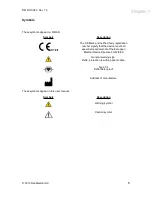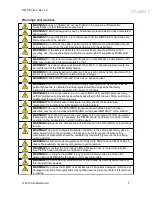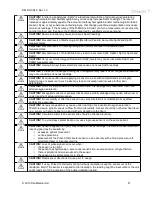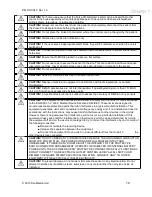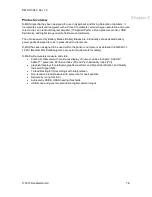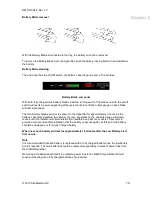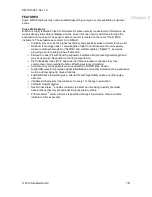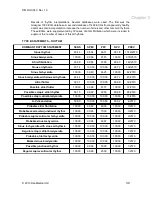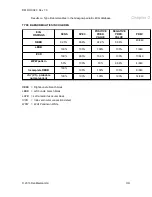
DM DOC 040 Rev 1.0
NUMERIC DISPLAY – SpO2
Stability of the SpO2 readings may be a good indicator of signal validity. Although stability is a
relative term, experience will provide a good feeling for changes that are artifactual or
physiological and the speed, timing, and behaviour of each. The stability of the readings over time
is affected by the averaging mode being used. The longer the averaging time, the more stable the
readings tend to become. This is due to a dampened response as the signal is averaged over a
longer period of time than during shorter averaging times. However, longer averaging times delay
the response of the oximeter and reduce the measured variations of SpO2 and pulse rate.
NUMERIC DISPLAY - PULSE RATE
The Pulse Rate display may differ slightly from the heart rate displayed on ECG monitors due to
differences in averaging times. There may also be a discrepancy between cardiac electrical
activity and peripheral arterial pulsation. Significant differences may indicate a problem with the
signal quality due to physiological changes in the patient or one of the instruments or application
of the sensor or patient cable. The pulsations from intra-aortic balloon support can cause the
pulse rate displayed on the Pulse CO-Oximeter to be significantly different than the ECG heart
rate.
NUMERIC DISPLAY – SpCO
A stable SpCO reading is associated with correct sensor placement, small physiological changes
during the measurement and acceptable levels of arterial perfusion in the patient’s fingertip
(measurement site). Physiological changes at the measurement site are mainly caused by
fluctuations in the oxygen saturation, blood concentration and perfusion.
Inaccurate measurements may be caused by:
■
Significant levels of methemoglobin.
■
Intravascular dyes such as indocyanine green or methylene blue.
■
Abnormal hemoglobin levels.
■
Abnormally low arterial perfusion.
NUMERIC DISPLAY – SpMet
A stable SpMet reading is associated with correct sensor placement, small physiological changes
during the measurement and acceptable levels of arterial perfusion in the patient’s fingertip
(measurement site). Physiological changes at the measurement site are mainly caused by
fluctuations in the oxygen saturation, blood concentration and perfusion.
Inaccurate measurements may be caused by:
Intravascular dyes such as indocyanine green or methylene blue.
Abnormal arterial perfusion
NUMERIC DISPLAY – PI
The Perfusion Index (PI) display provides a relative numeric indication of the pulse strength at the
monitoring site. It is a calculated percentage between the pulsatile signal and nonpulsatile signal
of arterial blood moving through the site. PI may be used to find the best perfused site and to
monitor physiological changes in the patient. It displays an operating range of 0.02 to 20.00%. A
percentage greater than 1.00% is desired. Extreme changes in the display number are due to
changes in physiology and blood flow.
SIGNAL IQ
The D-MAS display provides a visual indicator of the plethysmogram signal quality and an alert
when the displayed SpO2 values are not based on adequate signal quality. The signal quality
indicator displayed is called the Signal IQ and can be used to identify the occurrence of a
patient’s pulse and the associated signal quality of the measurement. With motion, the
plethysmographic waveform is often distorted and may be obscured by artifact. The Signal IQ,
shown as a vertical line, coincides with the peak of an arterial pulsation.
© 2013 DanMedical Ltd
20

